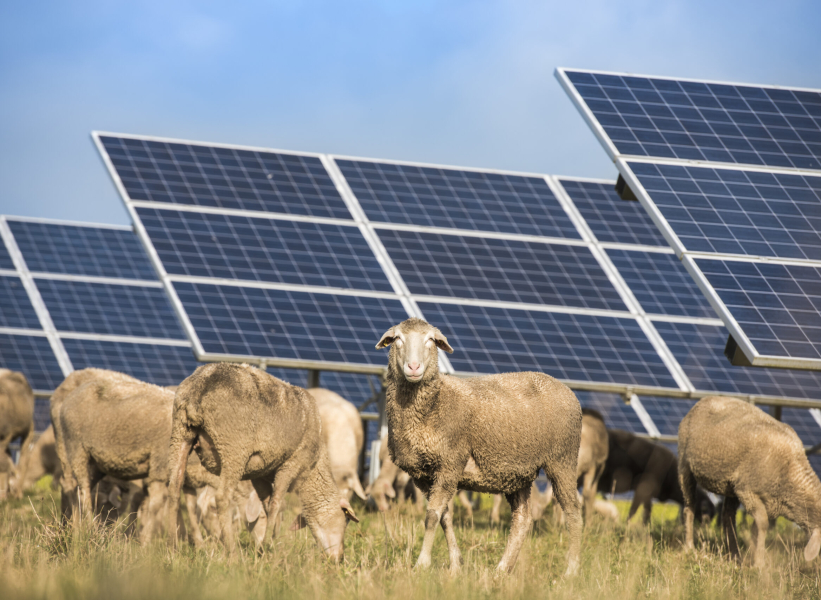Solar Owners
It's More ThanGrazing
Solar Sheep Connect is more than solar grazing. We create comprehensive, custom vegetation management solutions for commercial solar asset owners. Grazing sheep is an agrivoltaic solution that’s beneficial for all parties involved. It reduces the carbon footprint of your solar site while keeping undesirable vegetation at bay. Solar grazing is a socially responsible, natural and low-maintenance form of vegetation management.

Frequently Asked Questions
Solar grazing offers the following benefits to site owners:
- Sheep are a renewable resource capable of sustainable vegetation management and a substantial carbon offset compared to traditional mowing.
- Prior land use for farm- or ranchland remains intact.
- Increases the site owner’s social responsibility to renewable agriculture.
- Grazing has a symbiotic and synergistic relationship with wildlife and pollinator species.
- Proper grazing management systems reduce the amount of undesirable vegetation and helps regenerate native grasses, forbs, and pollinator species.
- Grazing increases the amount of carbon and nitrogen in the soil, improving soil health and tilth.
The primary grazing breed for Solar Sheep Connect is Dorper. Dorper sheep are ruminant animals and their preferred food source is grass and forbs. Vegetation (forage) has a nutritional value that changes over time, but can be compensated with feed supplements as needed.
Site conditions and forage quality greatly impact the efficiency of the grazing event. As the number of grazing events increase, the quality of the site and vegetation will improve as well – resulting in more efficient vegetation management by grazing.
Depending on site location, most vegetation is able to be grazed year-round.
Solar Sheep Connect has more than 20 shepherds that regularly perform site visits. When they are unable to be on-site, however, sheep are monitored remotely with 4G/LTE Solar Cellular Cameras.
The primary grazing breed for Solar Sheep Connect is Dorper. Dorper sheep are the most suited breed for solar grazing due to their incurious demeanor.
Solar Sheep Connect is responsible for injury or death by predation or escape. Site owners MUST ensure all gates are closed. Perimeter fences must be maintaining according to the original fence specifications and design. Solar Sheep Connect implements a secondary gate system to allow for entrance with one gate shut at all times.
Herds are accompanied by guardian animal(s), such as donkeys and/or Akbash dogs, to deter potential threats, including coyotes, bobcats, mountain lions, foxes, and other predators. A guardian allows the herd to coexist with predators in the area.
Shepherds conduct weekly scheduled inspections. More frequent visits can be scheduled upon request. Solar Sheep Connect requests 24-hour access for emergencies during the grazing period.
The carbon output during one (1) traditional mowing event on a 120 acre site is 15,172 lbs. This amount is completely offset by one (1) solar grazing event.
Pricing is based on size of solar facility, number of animal units required, type of vegetation, forage availability and quality, plant community composition, accessibility (ingress/egress), water availability, distance to water, etc.
Services
-
Grazing Infrastructure Consulting
-
Shepherd Vetting Process
-
Grazing Contract Services
-
Professional Reporting & Documentation
-
Carbon Capture Assessment
-
Carbon Offset Assessment
Ready to Find a Grazer?
Fill out the form below with information about your solar project. Feel free to include any additional information that would be helpful in gaining a better understanding of the land.
